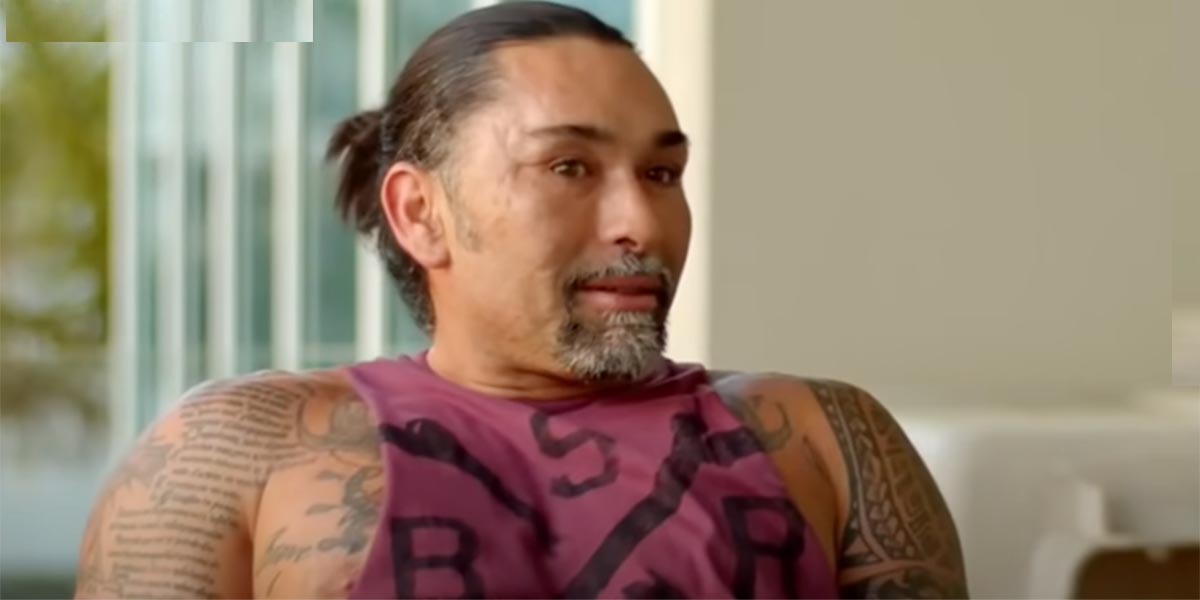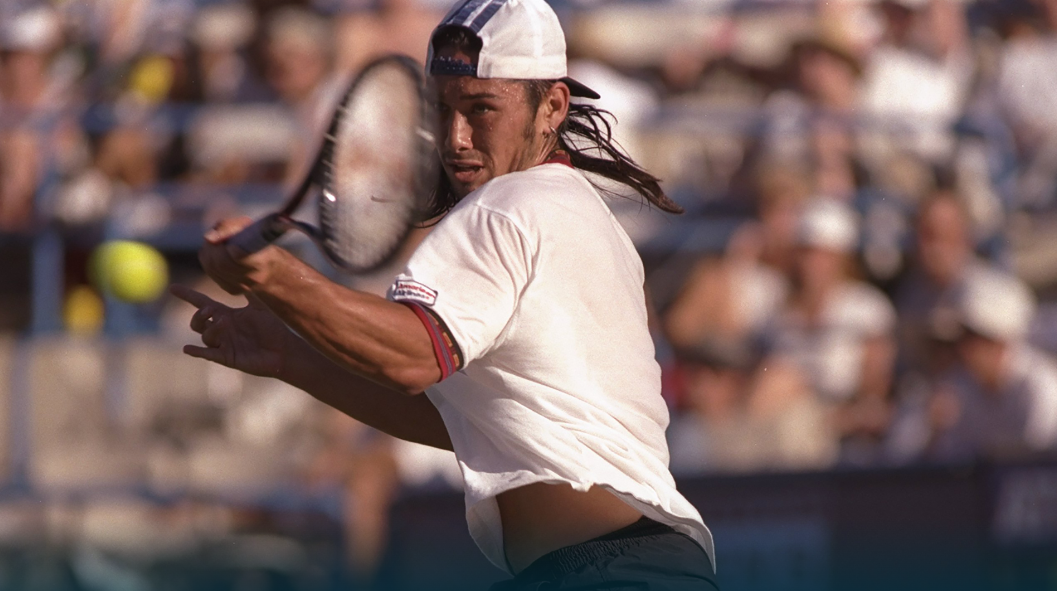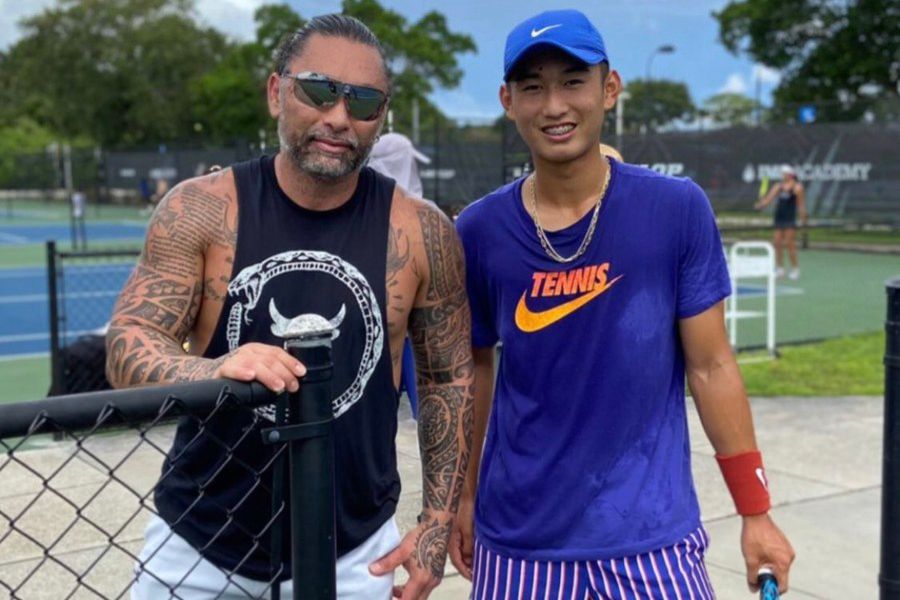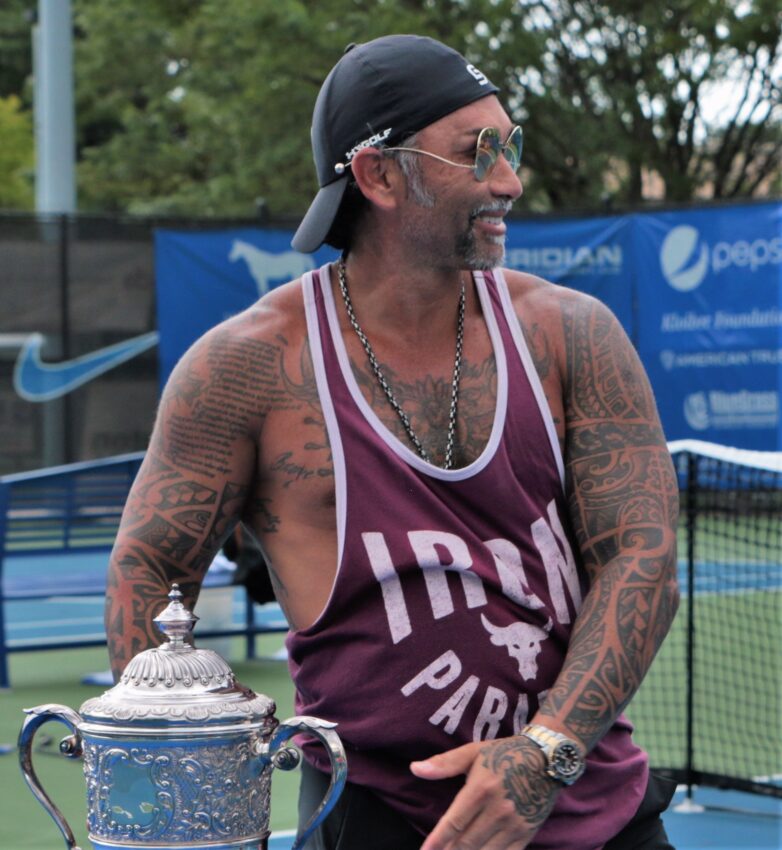“Man, look at you! You’re huge, you look like a bodybuilder.”
Chilean TV host Martín Cárcamo was very surprised when he met Marcelo Ríos again after a while, in a gym in Sarasota. The interviewer of the show “De Tú a Tú” on Chile’s Canal 13 travelled last year to see the new life of the former world number one, based in Florida.
It was on that TV show that Ríos showed for the first time his new body, which weighs almost 100 kilos, just like a bodybuilder. “I’m training to feel good. Two and a half hours a day to gain muscle mass. I never fail. Before, as a pro player, I had to lose weight, but I’m not at the age to go up and down anymore.”
Ríos looks completely different than he did more than two decades ago, when he was shining on tour, when he was winning Masters Series tournaments, when he was knocking Pete Sampras off the top of the ATP rankings. The image of that slim young man, not very tall in relation to the other tennis players, with slanted eyes that gave him the nickname ‘Chino’ (Chinese), long tied-back hair and a prodigious left hand, is the one that tennis fans keep in their memories.
The profile of the 1998 Australian Open runner-up (he is the only male number one who did not win majors) on the ATP website displays the data from when he was a pro. Weight: 73 kilos. Outside Chile, above all, the image that remains must be that. Today he carries 27 kilos more of pure muscle, covered in tattoos.


Marcelo Ríos disappeared from the global tennis scene for several years. “Disappeared” in a figurative context. Since his retirement in 2004, Ríos was only linked to professional tennis as Nicolás Massú’s assistant coach in the Chilean Davis Cup team since 2014, a time when Chile was fighting to avoid relegation to the American Zone III.
Ríos travelled to the Davis Cup finals in Spain in 2019, before resigning from the team due to differences with the Chilean Tennis Federation. He also appeared at the ATP’s No.1 gala in 2013. However, Ríos is not a character who appears as a guest at Grand Slams, nor has he been a commentator on international networks or, until this year, coached any player on the circuit. He has not given interviews to foreign media.
So his fleeting return to the tour as coach to 17-year-old Chinese talent Jerry Shang is a surprise to those who see him publicly on a tour tennis court.
He doesn’t talk much, but when he does to the Chilean press, he easily produces ten headlines per interview. His words are always direct and incendiary, but they rarely cross the borders of his country, which is partly explained by the anglocentrism of tennis.
The Anglo-Saxon power of his sport has always annoyed Ríos. A couple of years ago he criticised the institutions in an extensive interview with the newspaper La Tercera: “The ATP is the shittiest thing that exists. Only gringos involved”.
His body also changed under surgical lights. His face went under the knife. Ríos himself explained it in a conversation with the TV channel: “I fixed my forehead, which was very damaged by the sun. Back in the days nobody used sunscreen, so my face got destroyed. Also, they fixed my eyelid, which was too short, I couldn’t close my eye so I slept with my eyes open. I had bags and wrinkles.”
His new face was a target of mockery and memes on social media. “If I did it, it was because I wanted to, so let them say whatever, I don’t care,” he told Cárcamo, indifferent to the people talking about him, sitting on the terrace of the three-story house he was renting at the time while his own was being built, facing Sarasota Bay. There he feels completely at home, unlike in his country.
“It changed my life. I felt a bit shitty in Chile. In Miami there are a lot of Latinos, a lot of Chileans. Here it’s quiet, nobody bothers me. If anyone recognises me, they are very kind, they greet me from afar, but no autographs or anything,” he said of his refuge. He also confessed that he took up to 12 milligrams of anxiolytics a day due to the stress and anxiety he suffered while living in Santiago.
In an interview with CLAY, former Argentine tennis player Horacio de la Peña, who knows the former world number one well, said figuratively that Chile “expelled” him because of his right-wing political thinking.
“Ríos doesn’t like lazy people, he doesn’t like social things. He says it all the time, and Chile is going in another line. He doesn’t want this Chile. And that’s why he left,” de la Peña said.
On his Instagram account, the Chilean has come out to defend his right to express his opinion, after receiving criticism in the virtual world. “Everything I have I earned through hard work and nobody gave me anything for free. For me and for successful people these are not privileges, it is a consequence of the effort that my parents taught me and that I do in everything I set out to do in life. Successful people are not so by chance and neither are lazy people”, he says in one of his latest posts.
His wife, Paula Pavic, explained to Canal 13 the differences between the Ríos who settled in the United States and the one who walks around his native country: “When he arrives at the airport in Chile, he starts to put on a shell. There, he is a different person. I feel the weight of having to walk with ‘Chino’ Ríos in Chile. I don’t like ‘Chino’ as much as Marcelo Ríos”.
My friend Maradona
It was during one of the 2018 Davis Cup play-offs that Ríos had an off-practice intervention that got people talking. He approached a group of local journalists, and got ready to hear the first question:
-How have you seen the (Chilean) players who are standing out, moving up in the ATP rankings and having good seasons?
-Hey, as my personal friend Diego Armando (Maradona) says, let all of you suck it, because I don’t talk to any journalist. Questions?
No journalist responded to his offenses. The same reporter who asked the first question pretended not to hear him and then asked him about the meeting he had with the Chilean Minister of Sport (ironically also a journalist) to organize a celebration for the 20th anniversary of his arrival at the top of the rankings in 1998:
“Keep sucking it up,” Ríos replied.
The reference to Maradona’s famous words after Argentina’s narrow qualification for the 2010 World Cup in South Africa took tennis out of the discussion in the run-up to match-ups. The episode crossed the Andes, when Gaston Gaudio, a close friend of Ríos, told a couple of stories on an Argentinian radio station about the hot topic.
“Do you understand that he’s totally out of his mind?” said Gaudio after listening to the audio of Ríos and before dispatching two very tasty stories: when in a lift in Australia the Chilean refused with impressive apathy an autograph to an old woman in a wheelchair, and the time they went out partying in Basel, with a completely drunk Ríos who ended up smashing the window of the nightclub where he had been expelled for misconduct. Anecdotes were worshipped.
Although the 2004 Roland Garros champion’s credibility, if story-telling is anything to go by, is not the strongest: Rafael Nadal pointed out that he was lying after Gaudio revealed that the Spaniard had broken seven rackets after losing to him in Buenos Aires.
Ríos has referred to his trans-Andean friend as a “mythomaniac”: “He made up that story. I told him, ‘It’s not really you, you’re an invention’. Gaudio has a very strange personality.”
Whether true, inaccurate or outright false, such stories caused massive delirium because they are perfectly attributable to the always controversial figure of Ríos, who although he has many haters for his controversial attitudes, openly admitting he is right-wing, or saying he does not like homosexuals, in his country they love him much more than they hate him.
Ephemeral experience back on tour
Marcelo Rios began an unprecedented adventure. He returned to the professional tour as coach of the young Chinese Juncheng ‘Jerry’ Shang, with whom he confessed to be excited by the great potential of the Asian player.
He compared themselves to the duo Juan Carlos Ferrero and Carlos Alcaraz, because it is the kind of challenge that motivates him. Working with someone at the bottom to try to take him as far up the ladder as possible.
But Ríos got fired by Shang’s team without explanation. Although he knows that it was not because of results: in just two months of work together, Shang advanced more than 160 places and got into the top 200, won a Challenger and played the final of another.

In conversation with Chilean journalist Carlos González Lucay, Ríos speculates the reasons for the break, alluding to Shang’s father: “He comes out of his mind, he starts screaming. Parents on the court are terrifying. (The father) got upset because I took Jerry to training after a game in which he played badly. It’s a very difficult culture, it’s very difficult to live with them.”
“For me a professional trains two and a half hours in the morning and two and a half hours in the afternoon, plus physical. He wakes up at 12 o’clock, trains only two hours per day…. Any pain, we stop. Not because you pay me good money, we will train the time you want to,” he told La Tercera.
Ríos did not want to give in: “If they want a bum next to them, fine. But I’m not going to give in. I’m here to be top ten, not to be 150 or 200. He’s very talented, he plays very well, he still has a lot to learn, but he’s very lazy. I used to ask him to train in the afternoon and he didn’t want to, he told me he had to do physical training. He needs to change that mentality and be a dog on court. If he really works hard, he could be very good”.
***








2 Comments to “Tattoos and a bodybuilders’ lifestyle: Marcelo Ríos has nothing to do with the player of the 90’s”
Scoop Malinowski
Excellent feature.
Sebastián Varela
Thanks!